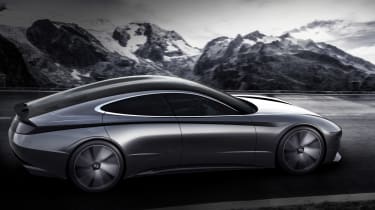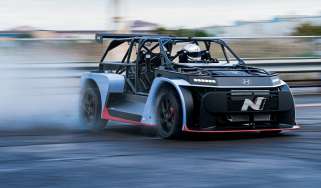Hyundai Le Fil Rouge concept ushers in new design direction at Geneva 2018
Hyundai is heading off in a new design direction, and the Le Fil Rouge coupe concept is showing the way.
Hyundai’s star turn at the 2018 Geneva motor show is less a car and more a completely new design direction, or so the Korean marque would have us believe. The Hyundai Le Fil Rouge concept is a long, elegant, four-door coupe, and it certainly seems to represent a radical departure from Hyundai’s current, somewhat staid, design themes.
The Le Fil Rouge concept is the work of Luc Donckerwolke, the head of Hyundai’s European design centre, and the man behind Lamborghini’s Murcielago and Gallardo, as well as the Bentley EXP 10 Speed 6 concept of 2015. It’s said to be based around Hyundai’s new design theme of ‘sensuous sportiness’, and according to Hyundai’s head of styling, Sang-yup Lee, the overall goal is to create ‘vehicles with heightened emotional value’.
We’ll let you be the judge of how successful this Hyundai coupe concept is at stirring your emotions, but in terms of hard facts, there’s little to go on. The front end is dominated by a vast grille stretching across the nose from wheel-arch to wheel-arch, and the lack of obvious headlights suggests there’s LED lighting technology integrated into the grille itself.
We’re told that the concept uses a new ‘light architecture’ approach that involves blending the roof and pillars seamlessly into the car’s silhouette, with the aim of creating a single line from nose to tail. In profile, this is evident with the line of the windscreen arching back over the double-bubble roof and ending in a small boot spoiler.
The concept has a fully-formed interior, with slim seats designed to maximise legroom and for optimum ergonomics. A floating beam of a centre console splits the entire cabin, while light wood, aluminium and ‘high-tech fabrics’ provide the finishes.
There’s the predictable array of display screens with haptic feedback technology that responds to the touch; these are for both driving information and entertaining the rear-seat occupants. Interestingly, the cabin itself is structured to improve ventilation, with the curved surfaces used to funnel air more efficiently around the space.








